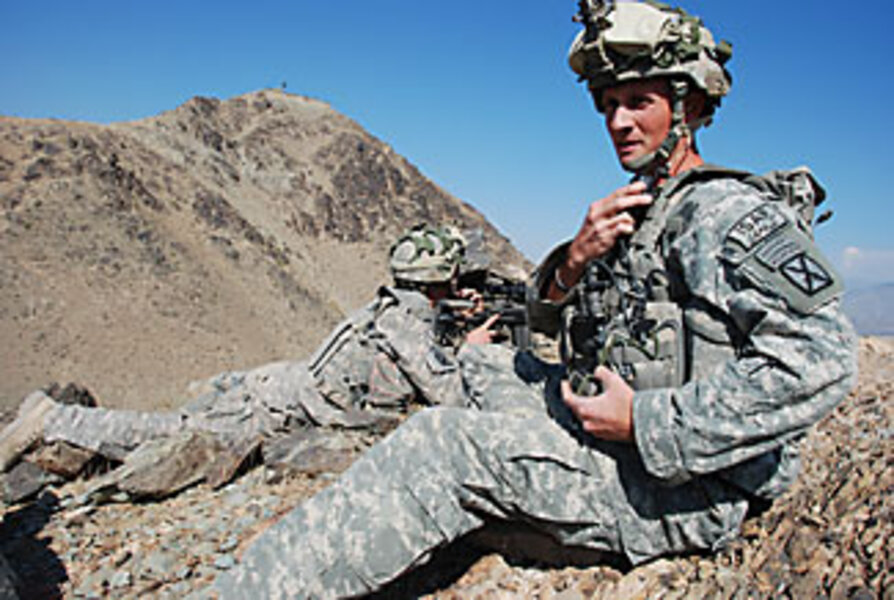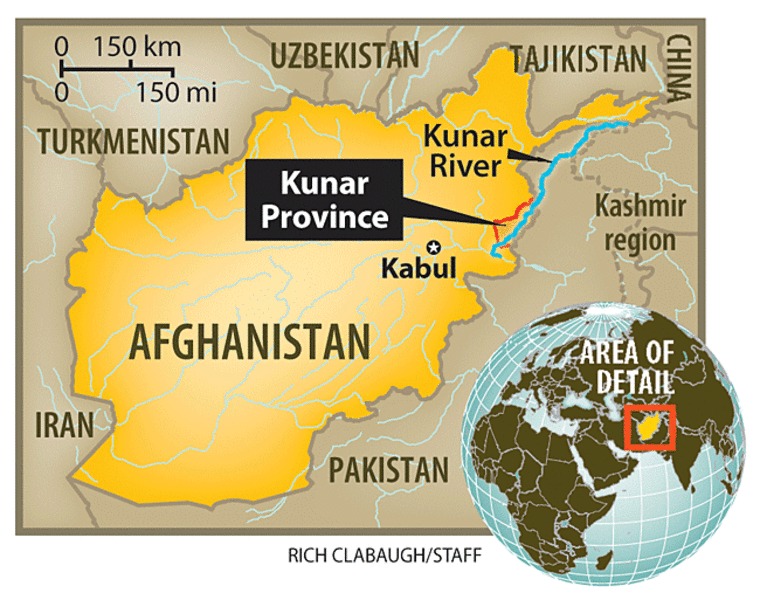Should Obama order Afghan war troop surge? Troops say maybe not.
Loading...
| COMBAT OUTPOST PENICH, Afghanistan
As President Obama and his top advisers make their final decisions on whether to send 40,000 or more troops to Afghanistan, it comes on the heels of the bloodiest month for US forces in the history of the eight-year conflict. In October, 55 troops were killed in action in Afghanistan.
If there is a surge, US Army Capt. Micah Chapman says there will likely be more months like this ahead. "The more troops you have on the ground, the more chances there are for casualties," says the Fort Drum, N.Y., resident. "But I think you'll see a marked decrease in violence across the board once you get past the initial flood stage."
But for many of the soldiers at Combat Outpost Penich, top commander Gen. Stanley McChrystal's stark warning – to send more troops or risk failure – sounds too dire. At least in the eastern Kunar River Valley, where their company-sized force (about 100 soldiers) is posted, they say the challenges aren't quite so insurmountable. Yes, they say, major results may take time, and soldiers here face difficult living and working conditions, but they say they can get the job done.
Combat Outpost Penich (manned by Attack Company, of the US Army's 1-32 Infantry Battalion, 10th Mountain Division) is experiencing something of a minisurge itself. Through a shuffling of forces, nine months ago, Attack Company became the first permanent US troop presence east of the Kunar River, helping to control an area of Kunar Province long out of reach for United States forces.
"If you bring more troops it will speed up results, but it can be done with what we have," says US Army Lt. Gabe Lamois of Alexandria, Va., echoing the common sentiment here in the river valley.
A surge in US troops could even hinder another goal here, of putting an Afghan face on security efforts, some soldiers point out.
Surge would allow push into countryside
In this vast country with much of the population spread across remote villages, US forces must be strategic about where they project strength, trying to block central arteries of enemy movement and disrupt strongholds. McCrystal recently ordered the closure of many remote outposts in an effort to focus on protecting key population centers – such as the cities of Kabul and Kandahar – and winning over residents.
In this company, US soldiers say they don't need a surge. But they agree that with more boots on the ground, they would have the resources to extend their presence farther from the base into areas where the Taliban remain popular. Like combat units elsewhere, this one is stretched thin by the requirements of simply protecting their base. A surge "would make it easier because there would be more people to pull guard [duty] and the infantry can go out and do its job," says Pfc. Daniel Robbins of Iowa City, Iowa.
The company's missions include hunting the Taliban with Afghan security forces as well as building roads with local Afghan leaders.
Robbins says that when his unit is busy with operations it places stress on soldiers who alternate between guard duty and missions, leaving little time for rest.
If there was a surge, says Spc. Nick Armstrong of Chesapeake, Va., "then we could work more in terms of pushing out [into the countryside]." He adds that he can imagine the push happening either with more platoon-sized bases (about 40 to 60 soldiers) or increasing personnel levels on larger bases to allow for more patrols.
What role would Afghans play in surge?
One of the most important questions about a potential NATO surge is how local Afghan forces will factor into the equation. International forces have been working to put Afghans in the lead for most missions. While some Afghan units are highly competent, many others struggle to maintain even the most basic standards of a professional army.
An American troop surge could risk putting "a huge US face on everything," which would do little to bolster the reputation of Afghan security forces in the eyes of locals, says Lamois.
But US Marine Lt. Richard Allis of Princeton, N.J., who is part of an embedded training team working with a local Afghan Army unit, says increasing the size of each embedded team would help. Now, with only two other men on his team, for security reasons none of the marines are allowed to accompany the Afghan Army on missions unless they're part of a larger joint patrol with the US Army. "It would be nice to be a little more independent," he says.
The attitudes of Afghan security forces mirror those of their US counterparts, with most saying the current NATO troop level works. Though more would help, they say, success here does not depend on a surge.
But Afghan officers worry, though, about how they would fare if US troops were to withdraw.
"The Taliban is not scared of the Afghan Army or Afghan police because we don't have heavy weapons. But there's enough US soldiers here to make us safe," says Raheem Hamdard, an Afghan policeman.
For US soldiers though, there's little drama over the pending Obama troop-surge decision. Most soldiers say they're too busy.
"Out here you don't hear much about it. You kind of get lost in the mix of things," says Spc. Don Frigge of Tulare, Calif.






